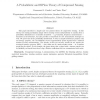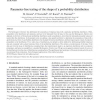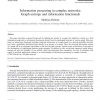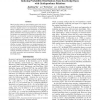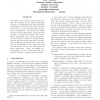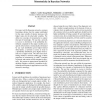DCG
2008
14 years 3 months ago
2008
Recently there has been a lot of interest in geometrically motivated approaches to data analysis in high dimensional spaces. We consider the case where data is drawn from sampling...
CORR
2010
Springer
14 years 3 months ago
2010
Springer
This paper introduces a simple and very general theory of compressive sensing. In this theory, the sensing mechanism simply selects sensing vectors independently at random from a ...
CORR
2008
Springer
14 years 3 months ago
2008
Springer
We analyze a simple random process in which a token is moved in the interval A = {0, . . . , n}: Fix a probability distribution
COMBINATORICA
2008
14 years 3 months ago
2008
A random geometric graph Gn is constructed by taking vertices X1, . . . , Xn Rd at random (i.i.d. according to some probability distribution with a bounded density function) and...
BIOSYSTEMS
2007
14 years 3 months ago
2007
The Kolmogorov–Smirnov test determines the consistency of empirical data with a particular probability distribution. Often, parameters in the distribution are unknown, and have ...
AMC
2008
14 years 3 months ago
2008
This paper introduces a general framework for defining the entropy of a graph. Our definition is based on a local information graph and on information functionals derived from the...
ICASSP
2010
IEEE
14 years 3 months ago
2010
IEEE
In order to structure a gene network, a score-based approach is often used. A score-based approach, however, is problematic because by assuming a probability distribution, one is ...
AAAI
2010
14 years 3 months ago
2010
When merging belief sets from different agents, the result is normally a consistent belief set in which the inconsistency between the original sources is not represented. As proba...
IJCAI
1997
14 years 4 months ago
1997
Motivated by the need to reason about utilities, and inspired by the success of bayesian networks in representing and reasoning about probabilities, we introduce the notion of uti...
UAI
2004
14 years 4 months ago
2004
For many real-life Bayesian networks, common knowledge dictates that the output established for the main variable of interest increases with higher values for the observable varia...

